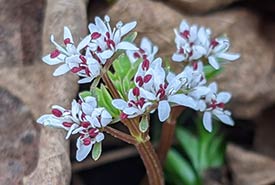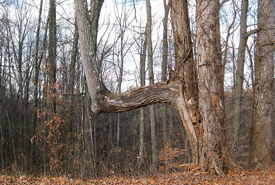Harbingers of spring for Ontario

Pepper and salt (Photo by Pat Deacon, CC BY-NC 4.0)
I am a retired forestry scientist who has wildflower gardens. My mother introduced me to wildflowers at an early age. She grew up in Pennsylvania, and her favourite wildflowers were the delightfully fragrant trailing arbutus and mountain laurel (state flowers). My education and interest really blossomed when I took a spring flora course during college. This led to many years of botanizing hikes, searching for lovely spring ephemerals during my career as a graduate student.
For about the last 30 years, I have grown my own wildflowers. I have purchased many of my wildflowers from nurseries and horticultural society sales, which are my preferred sources because they are the most sustainable. I am fortunate to have a home with an extra separate lot with mature trees, which is where most of my wildflowers grow.
Canadian spring wildflower attractions coming to your area
For those of you in southern Ontario, one harbinger of spring, called pepper and salt, is often the first wildflower to bloom. This small spring ephemeral has white petals that contrast with the dark-reddish stamens, giving it the salt and pepper look. Other early bloomers to look for with more widespread distributions across Canada include sharp-lobed hepatica, round-lobed hepatica, dutchman’s breeches, yellow trout lily and bloodroot.
Bloodroot is a particularly interesting medicinal wildflower because it gets it name from the blood-like bright reddish-orange sap that exudes from its severed stems and roots. Additionally, bloodroot contains sanguinarine, a medicinal but toxic compound that has an antiseptic activity. Do not consume this plant, as it is toxic! Depending on your location in Canada, these flowers will start blooming in early April, but most are more likely to bloom later in the month or May. Check with your local naturalist society for blooming times in your area. The wildflowers are calling you! Plan a trip today.
In the next blog, I will be describing two or three of my favourite early spring wildflowers and how to grow them.




